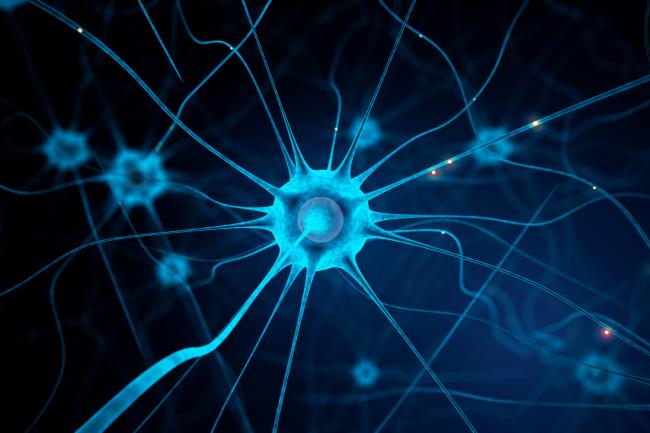Scientists define molecule's role in itch and pain pathways
March 20, 2018
Scientists define molecule's role in itch and pain pathways
At a Glance
- Researchers defined the neural pathways for itch sensation and identified a signaling molecule called somatostatin that enhances itch and blunts pain in mice.
- A clearer understanding of itch and pain circuits, including how they interact, could have important implications for treatments related to itch and pain.

Human survival depends in part on our ability to distinguish among unpleasant sensations, such as itch versus pain, so we can take appropriate action. An itch on the arm, for example, might trigger a swat at a disease-carrying insect; painful heat may cause you to pull away to prevent a burn.
The skin is studded with nerve endings that detect itch and pain. These sensory signals travel via nerves to a node of the spinal cord and then onward to the brain. Although itch and pain nerves are thought to convey distinct sensations, in many cases their pathways are so close that their signals sometimes overlap. For instance, studies show that certain types of pain can suppress itch.
To tease apart these pathways, a research team led by Dr. Mark Hoon of NIH's National Institute of Dental and Craniofacial Research (NIDCR) and Dr. Andrew Todd at the University of Glasgow, UK, explored the role of somatostatin, a small molecule produced by some sensory neurons (nerve cells). Somatostatin had been linked to itch and pain, but its exact role has been unclear. The results were published online on March 19, 2018, in Nature Neuroscience.
Earlier research from the team mapped out an itch pathway involving the small signaling molecule natriuretic polypeptide b (Nppb). In their new study, the scientists found that Nppb-producing neurons also make somatostatin. When nerve cells containing somatostatin were activated in mice via optogenetics€”a light-based technique that can turn on or off specific neurons€”the animals vigorously scratched their cheeks, demonstrating that these neurons play a role in itch.
The researchers next tested itch-inducing substances on the skin of mice that were genetically engineered to lack somatostatin. The animals didn't scratch at the area as they normally might. This shows that somatostatin plays a key role in itch signal transmission.
A series of experiments using genetically engineered mice revealed that somatostatin enhances itch by deactivating neurons in the spinal cord that make the molecule dynorphin, a molecule that normally puts the brakes on itch signals.
Further work showed that, although somatostatin and Nppb are produced by the same nerve cells, they transmit itch signals via different routes that ultimately converge on the same set of neurons in the spinal cord. These neurons, known as gastrin-releasing peptide receptor (GRPR) neurons, send itch messages on to the brain. Nppb activates GRPR neurons via one pathway. Somatostatin activates GRPR neurons in a more roundabout way. It stops dynorphin-producing neurons from de-activating GRPR neurons, freeing the neurons to transmit itch signals to the brain. Together, both the Nppb and somatostatin routes work to amplify itch.
In an unusual twist, the researchers also found that mice lacking somatostatin displayed heightened sensitivity to painful heat. Taken together, the results suggest that while somatostatin enhances itch, it also blunts pain. Scientists have long known that pain can suppress itch. It now appears that itch may also suppress pain.
"Sensory signals such as itch and pain often interact, making them trickier to modify when something goes wrong," Hoon says. "This work provides us with a better understanding of the itch neural circuitry, as well as how somatostatin contributes to the overlap of pain and itch signals in the spinal cord."
These findings could inform future efforts to improve treatments related to pain and itch.
€”by Catherine Evans, Ph.D.


